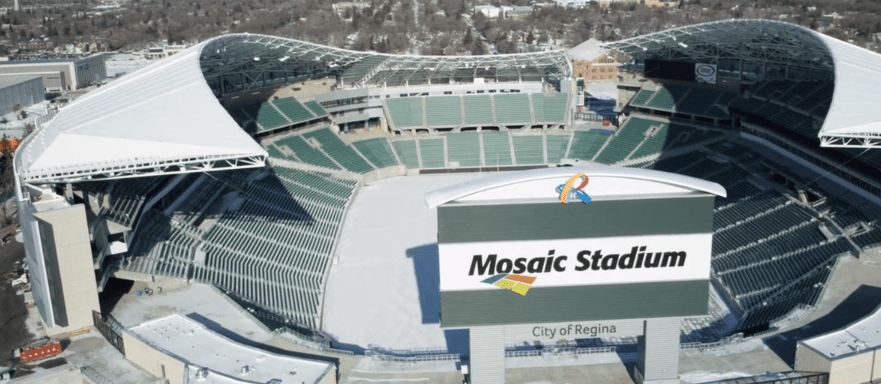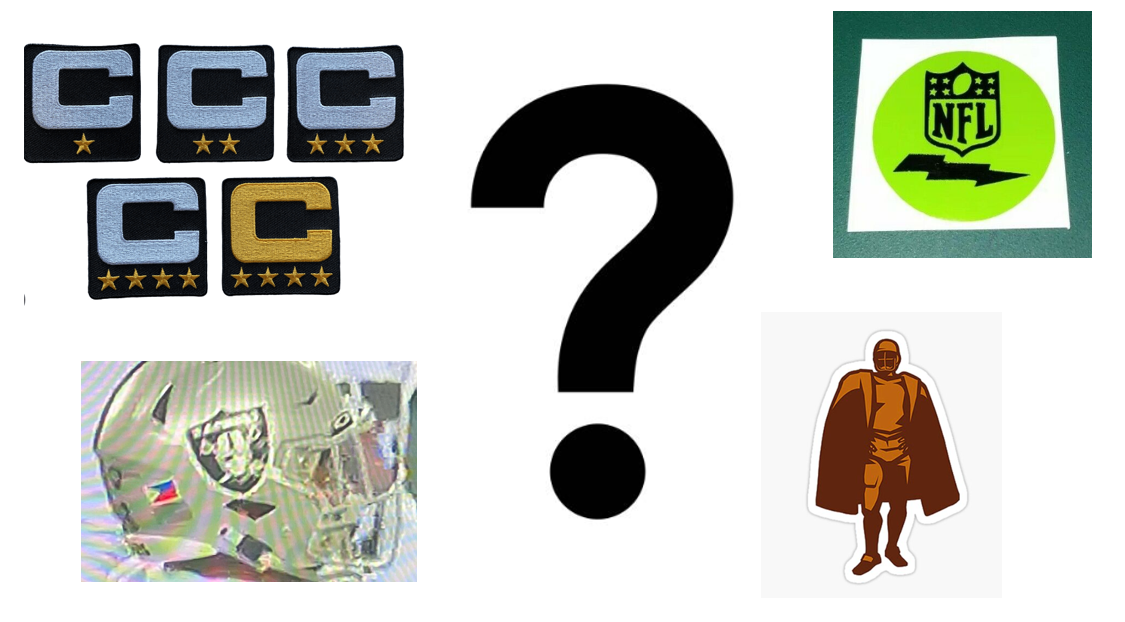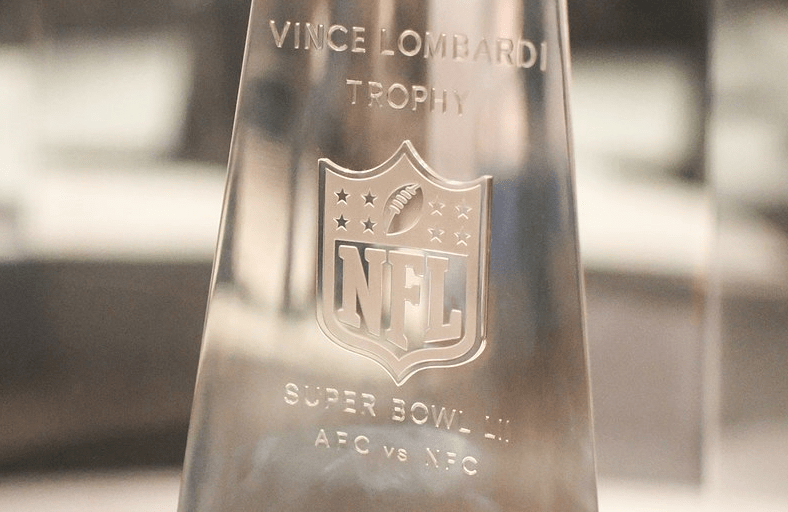
The CFL differs from the NFL in a lot of ways – from rules, to field size, to scoring. But the “biggest” way, is the size of the CFL stadiums.
The CFL as a league, even though it is older than the NFL, is much more community-centric.
Rather than being a humongous, soulless, money-generating branding machine, which is what almost all of the NFL teams have become, the game is fun and is nothing without the community behind it.
The CFL doesn’t have the TV deal of their NFL counterparts. So, gate receipts, concessions, and the in-game experience become supremely important.
CFL stadiums are small compared to NFL stadiums.
- In 2017, an NFL game had an average attendance of 67,405.
- With a capacity of 82,500 the largest NFL stadium is MetLife Stadium home to the New York Giants and Jets.
- The smallest NFL stadium is the Chicago Bears Soldier Field at 61,500.
- The average seating capacity in the CFL, out of 9 CFL stadiums, is 34,537.
- The Brick at Commonwealth Stadium, home of the Edmonton Elks, is the largest CFL stadium with seating for 56,302.
- The smallest stadium in the Canadian Football League is Percival Molson Memorial Stadium, home of the Montreal Alouettes with 23,420.
Smaller CFL stadiums lead to a better fan experience and a real connection between fans and teams that the NFL cannot replicate.

List of Canadian Football League Stadiums
I listed these based on max capacity, largest to smallest:
The Brick Field at Commonwealth Stadium

Seating Capacity: 56,302
Home Team: Edmonton Elks
Location: Edmonton, Alberta
Year Opened: 1978
Notes: Construction commenced in 1975 and the venue opened ahead of the 1978 Commonwealth Games hence its name. It has been the Elks home stadium since 1978. The all-time regular-season attendance record is 62,517 against the Saskatchewan Roughriders in 2009.
BC Place

Seating Capacity: 54.300
Home Team: BC Lions
Location: Vancouver, BC
Year Opened: 1983
Notes: The stadium opened on June 19, 1983, and was built as an indoor structure with an air-supported roof, the largest of its kind in the world upon its opening.
McMahon Stadium

Seating Capacity: 35,650
Home Team: Calgary Stampeders
Location: Calgary, Alberta
Year Opened: 1960
Notes: The first football game took place at the stadium on August 15, 1960. The stadium is the fifth-largest stadium in Canada. a stadium attendance record of 46,020 spectators occurred at the 97th Grey Cup, between the Montreal Alouettes and Saskatchewan Roughriders on November 29, 2009.
IG Field

Seating Capacity: 33,422
Home Team: Winnipeg Blue Bombers
Location: Winnipeg, Manitoba
Year Opened: 2013
Notes: The stadium contains a corrugated metal roof, restaurant, 52 suites, walk of fame and other amenities.
IG Field hosted an very forgettable NFL preseason game between the Green Bay Packers and Oakland Raiders on August 22, 2019. The teams largely avoided playing starters in the game. In attempting to move the goalposts back five yards from each position to accommodate their NFL positioning, it left holes in each end zone
Mosaic Stadium

Seating Capacity: 33,350
Home Team: Saskatchewan Roughriders
Location: Regina, Saskatchewan
Year Opened: 2017
Notes: A white bronze statue of a Roughrider receiving a pass, supported by fans at the base, is located on the stadium grounds. Mosaic Stadium was estimated to cost around $278 million to build. The roof’s curved design is meant to prevent snow from accumulating on the roof.
BMO Field

Seating Capacity: 25,000
Home Team: Toronto Argonauts
Location: Toronto, Ontario
Year Opened: 2007
Notes: Constructed on the site of the former Exhibition Stadium and first opened in 2007. From 2014 to 2016, the stadium underwent a series of major renovations, which added an upper deck to the east grandstand, a roof over the seating areas and lengthened the field to make it suitable for hosting Canadian football.
TD Place Stadium at Lansdowne Park

Seating Capacity: 25,161 (including standing room)
Home Team: Ottawa Redblacks
Location: Ottawa, Ontario
Year Opened: 1908
Notes: The playing field has existed since the 1870s, and the complete stadium since 1908. The stadium has been host to FIFA tournaments, Summer Olympic Games, and seven Grey Cups.
Tim Hortons Field

Seating Capacity: 24,390
Home Team: Hamilton Tiger-Cats
Location: Hamilton, Ontario
Year Opened: 2014
Notes: In July 2013, it was announced that Tim Hortons, the international restaurant chain that originated in Hamilton some fifty years earlier, had acquired naming rights to the stadium.
Percival Molson Memorial Stadium

Seating Capacity: 23,420
Home Team: Montreal Alouettes
Location: Montreal, Quebec
Year Opened: 1919
Notes: The Alouettes’ decision to return in 1998 was a problem. The team was being sponsored by the Labatt Brewing Company and the stadium shared the name of its major competitor, Molson, though not named for it. Eventually, the team chose to change sponsors and have been sponsored by Budweiser since 2014. The smallest CFL stadium but in my opinion, definitely the most beautiful.



















I enjoyed your overhead shots of and info. of 8 of the CFL stadiums but you left out the
Ottawa Redblacks facility at Lansdowne Park which seats approx. 24,000 +
I enjoyed your overhead shots of and info. of 8 of the CFL stadiums but you left out the
Ottawa Redblacks facility at Lansdowne Park which seats approx. 24,000 +
Correction: stadium is TD Place at Landsdowne Park
Largest attendance which includes standing room on Aug.11/18 was 25,161
Thank you Wayne! I updated the content.
As an American my goal with the piece is to share how awesome the CFL is – the league is an afterthought here but I have always loved it.
Thanks again!
Vancouver plays in a dome? What joke. Football is an outdoor sport.
lol Rob yes it is true!
In its defense that dome is GORGEOUS!
After checking to see if you picked up my comments about missing TD Place Stadium as one of the nine CFL Stadiums, I thank you for including it in your informative list and showing great
shots from overhead.
Also I really appreciate that your’re a big fan of the CFL.
Hopefully in a couple of years you will have another stadium to film -the Atlantic Schooners in
Halifax NS. as the CFL’s 10th franchise.
Thanks Paul.
Wayne I SINCERELY hope you are right! The league has been dragging it’s heels on Halifax for SO long.
This video I found breaks it all down: https://www.youtube.com/watch?v=Csl5ISbw-Vw
Makes Halifax even more obvious.